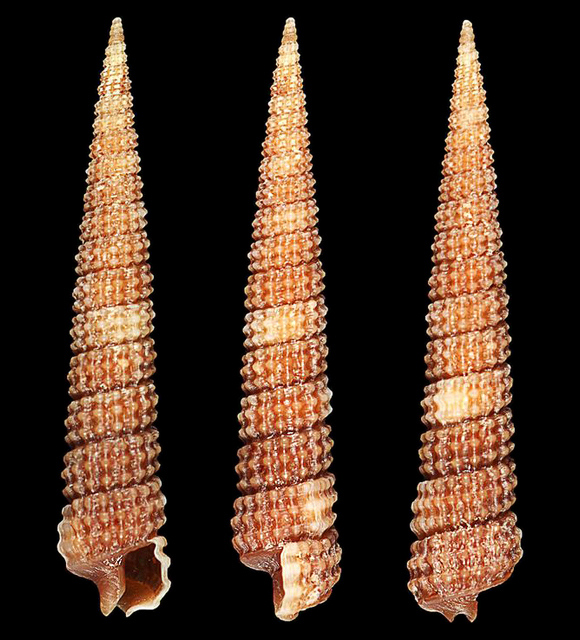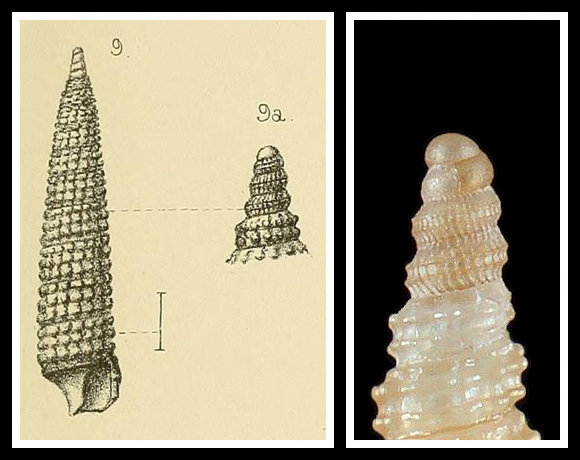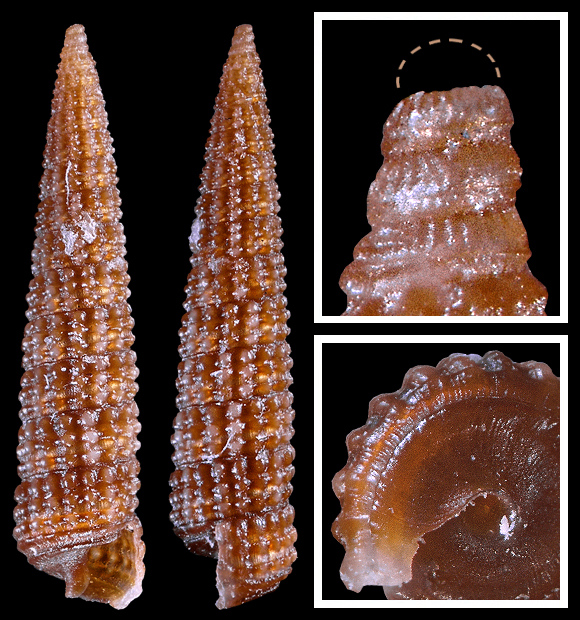
The name refers to the styliform shape of the shell, which is characterized by its « narrow, subcylindrical apex of four whorls, which are parted by a broadish, very slightly impressed suture; the tip is blunt, rounded, and smooth (or perhaps, when quite fresh, very faintly fretted); the other three apical whorls are very finely scored longitudinally by slightly fretted riblets which, near the bottom of each whorl, are cut across by two small approximate spiral threads. » – R. B. Watson: “On the Cerithiopsides from the Eastern side of the North Atlantic with three new species from Madeira”, Journal of the Linnean Society of London. Zoology vol. 19 (109), London 1885, p.94.
80m deep, on red coral bottom, Lastovo island, Dubrovnik-Neretva Comitat, S. Croatia. 11,5mm. Original picture provided by R. Stanić (HR) – (CC BY-NC-SA).


« On the base just within the contraction is a single circumbasal thread, between which and the pillar the base is very slightly and flatly depressed, and is scored across by minute radiating bars. » – Ibid. Above: a specimen, with egg-shell missing, from 26m deep, Punta de la Mona, east of La Herradura, Granada, Andalucia. 6,7mm.